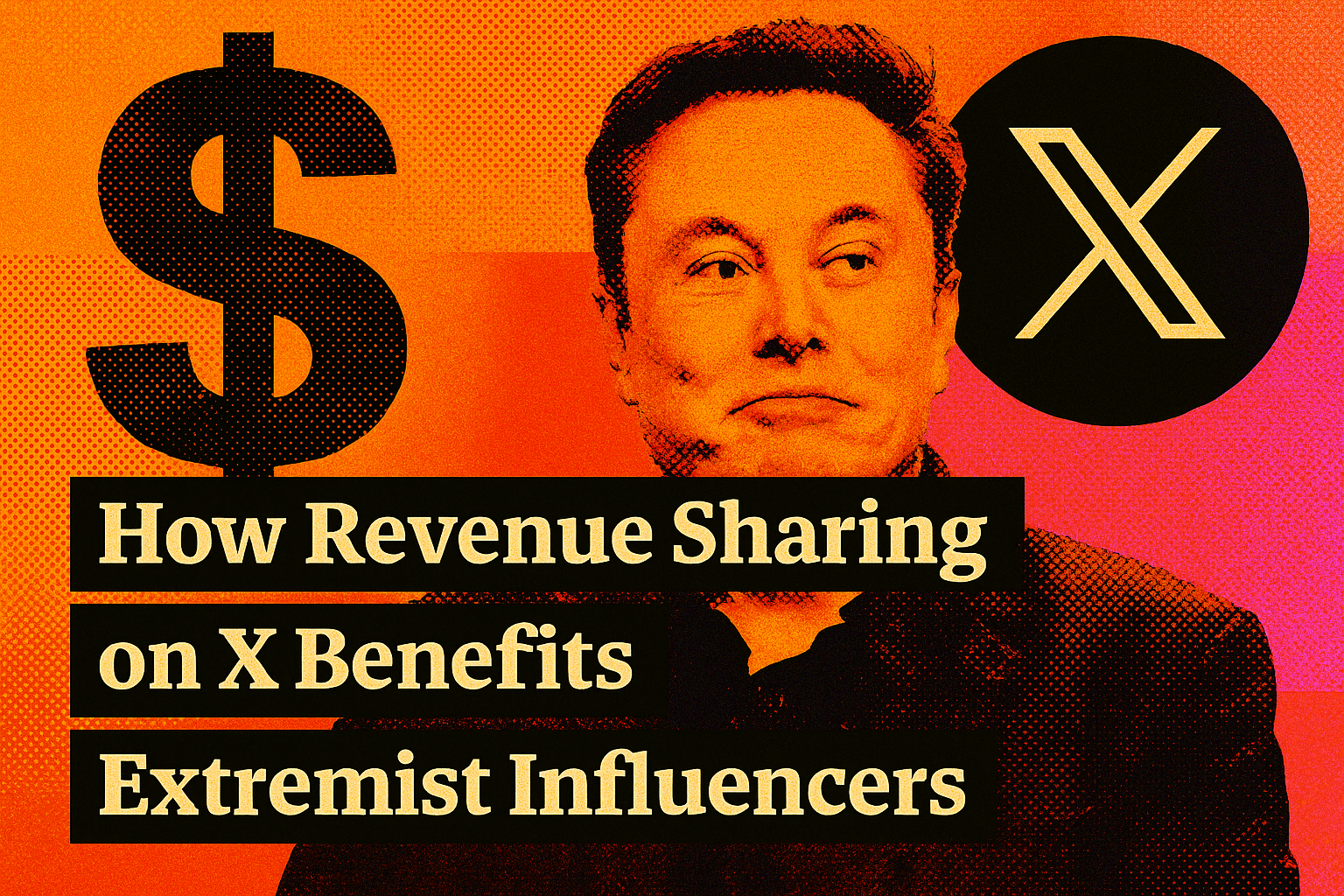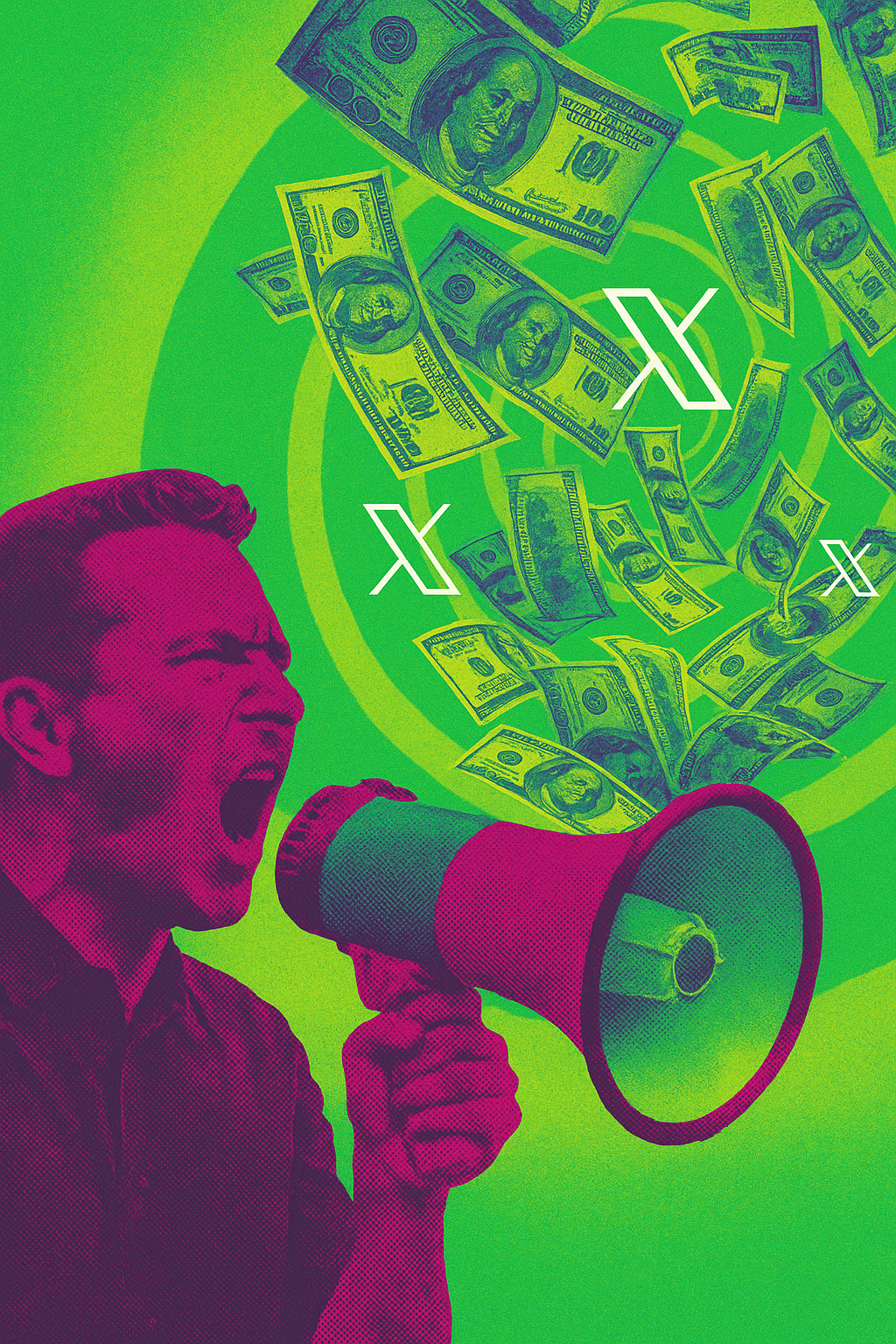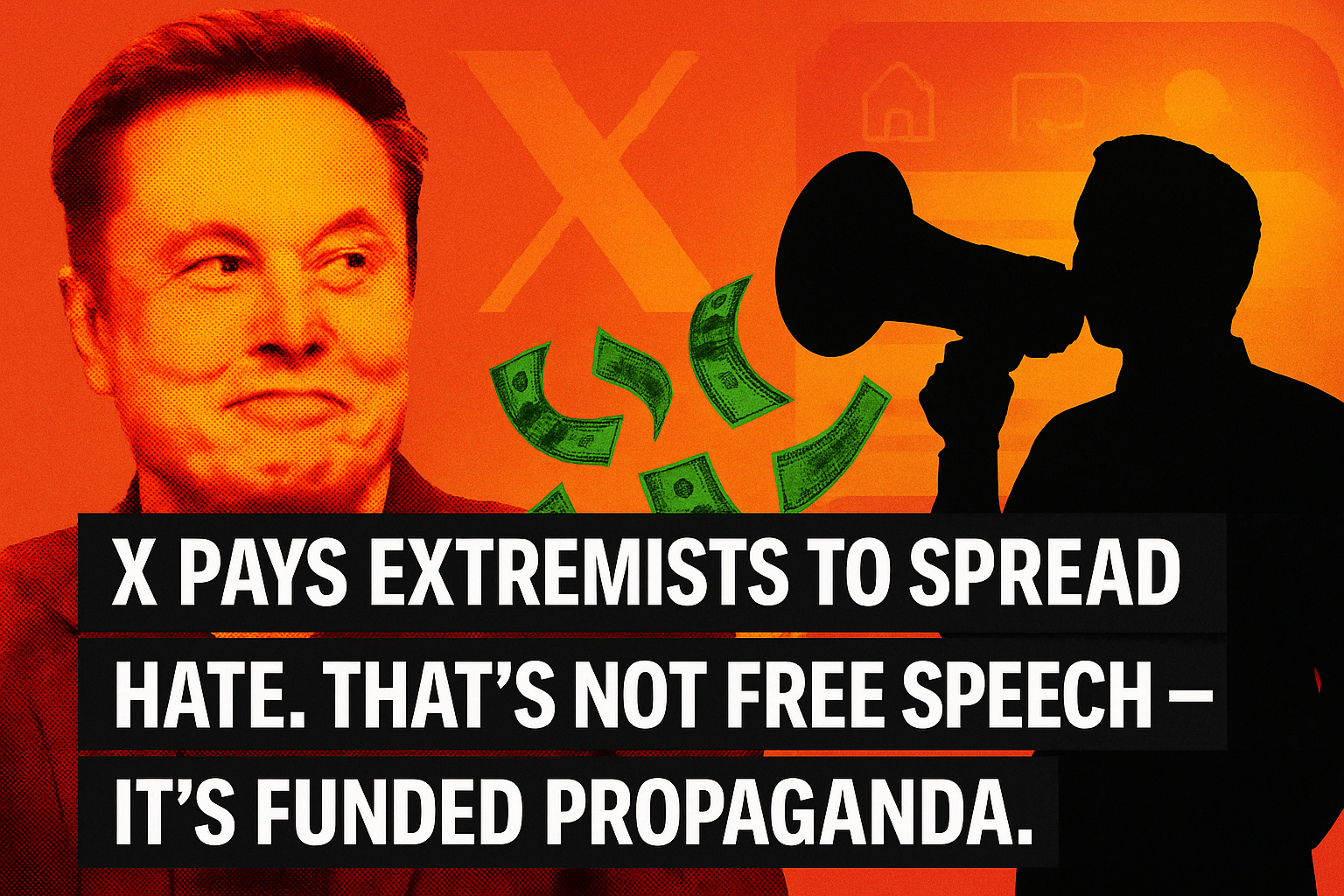The Business of Hate: How X Redistributes Wealth to Extremists
July 26th, 2025 · Greyson Tighe
In the wake of Elon Musk's acquisition of Twitter, now rebranded as X, the platform has undergone a transformation into a privatized infrastructure that distributes both wealth and visibility—functions traditionally associated with state power. What Musk calls "free speech" is, in practice, a monetized attention economy that disproportionately rewards ideological loyalty, inflammatory content, and outrage-driven engagement.
At the core of this system is X's creator monetization model, including X Premium and revenue sharing. These tools have enabled a form of algorithmic wealth redistribution that funnels funds to far-right influencers, conspiracy theorists, and policy violators [1]Media Matters, 2023: "Right-wing misinformers earned tens of thousands via ad revenue sharing."[2]Media Matters, 2023: "Far-right conspiracy theorist received ad revenue even after violating policies.", while suppressing dissenting or marginalized voices through algorithmic deprioritization, deboosting, and outright bans [3]7amleh, 2023: X continues to silence Palestinian voices online.". The result is not just a reshaped media landscape, but the emergence of a shadow political economy—one where financial and algorithmic incentives align to elevate specific ideologies without oversight, transparency, or accountability.
X now performs state-like functions—distributing money, controlling speech, and setting the terms of public discourse—but without the public interest mandate that legitimizes such power in a democratic context. Instead, it operates as a privately owned propaganda engine.
How It Works, and Who It Serves
X's monetization program is limited to users who subscribe to X Premium. To qualify for ad revenue sharing, a user must pay for a Premium account, have at least 500 followers, and generate 5 million post impressions over a rolling three-month period [4]Digiday, 2023: "Platform payouts revealed.".

Payouts are based on ad impressions that appear in the replies to a user's posts. However, there's a major restriction: only impressions from other X Premium subscribers are eligible for monetization [5]The Verge, 2024: Only Premium-user engagement counts toward revenue.".
This restriction shapes the entire incentive structure. Premium users make up a small portion of the platform, and their engagement determines revenue. Creators are thus driven to court Premium audiences—who often lean strongly right-wing, pro-Musk, and highly ideological [6]ArXiv, 2021: "Right-leaning content receives greater amplification on Twitter/X.".
Engagement on X includes likes, replies, reposts, and views. The algorithm uses these signals to determine what appears in users' "For You" feeds—now the default. But it doesn't simply surface what's popular; it prioritizes what drives engagement.
And engagement is not neutral. Outrage gets more replies. Conflict keeps people scrolling. Posts that trigger anger, tribal identity, or harassment spirals tend to perform better than calm or nuanced commentary. This means the algorithm favors provocation—and that provocation drives both reach and revenue [7]Knight Columbia, 2023: "Engagement amplifies divisiveness.".
Users posting daily attacks on marginalized groups, conspiracy theories, or flashy controversies often see high engagement because they provoke replies. And crucially, the more Premium users that reply, the greater the payout [8]Media Matters, 2023: "X paid users pushing anti-LGBTQ rhetoric, antisemitism, and disinformation.".
Investigations by digital rights groups have documented suppression of dissenting voices—Palestinian activists' posts being removed or downranked, and trans users suspended for reclaiming slurs [3]7amleh, 2023: "X continues to silence Palestinian voices online.". Their content often struggles to reach visibility while extremist content is monetized and amplified.
Wealth Redistribution for Hate
X's monetization system is built to reward engagement from a specific subset of users — those who pay, post frequently, and provoke reaction. Because Premium users skew heavily toward right-wing, pro-Musk ideology, the platform's incentive structure naturally elevates content that aligns with their worldview. This isn't about free expression — it's about engineering attention flows that generate revenue. And in that system, outrage is a feature, not a flaw.
Rather than correcting policy violations, X has allowed policy violators to profit. Investigations have repeatedly shown that accounts engaging in hate speech, conspiracy theories, or platform rule violations continue to receive payouts. At the same time, posts from activists, journalists, and vulnerable users are throttled, removed, or banned altogether. These outcomes are not incidental — they're the logical result of a platform designed to reward provocation over principle, loyalty over truth.

What was once a digital town square has been transformed into a privatized influence machine with the mechanics of a state and the ethics of a brand. X now controls what narratives are elevated, who gets heard, and who gets paid — all without any meaningful transparency, oversight, or obligation to the public interest. And in doing so, it reshapes not just discourse, but power itself: redistributing money, attention, and legitimacy to those who will use it to divide, dehumanize, and destabilize.
If this model continues unchallenged, it won't just warp what people see online — it will distort public life itself. The business of hate doesn't stay on the timeline. It bleeds into elections, policies, and institutions. And unless advertisers, lawmakers, and users force a reckoning, X will keep doing exactly what it was redesigned to do: profit from division, and call it freedom.
This is no longer just a platform — it's infrastructure. It distributes wealth like a bank, sets speech policy like a government, and shapes public perception like a media conglomerate. But unlike any of those institutions, it answers to no one but its owner. In that vacuum of accountability, X has become something worse than broken: it's functional by design. And that design serves power, not the public.
📬 Support Independent Journalism
Have our free newsletter delivered straight to your inbox!


Comments